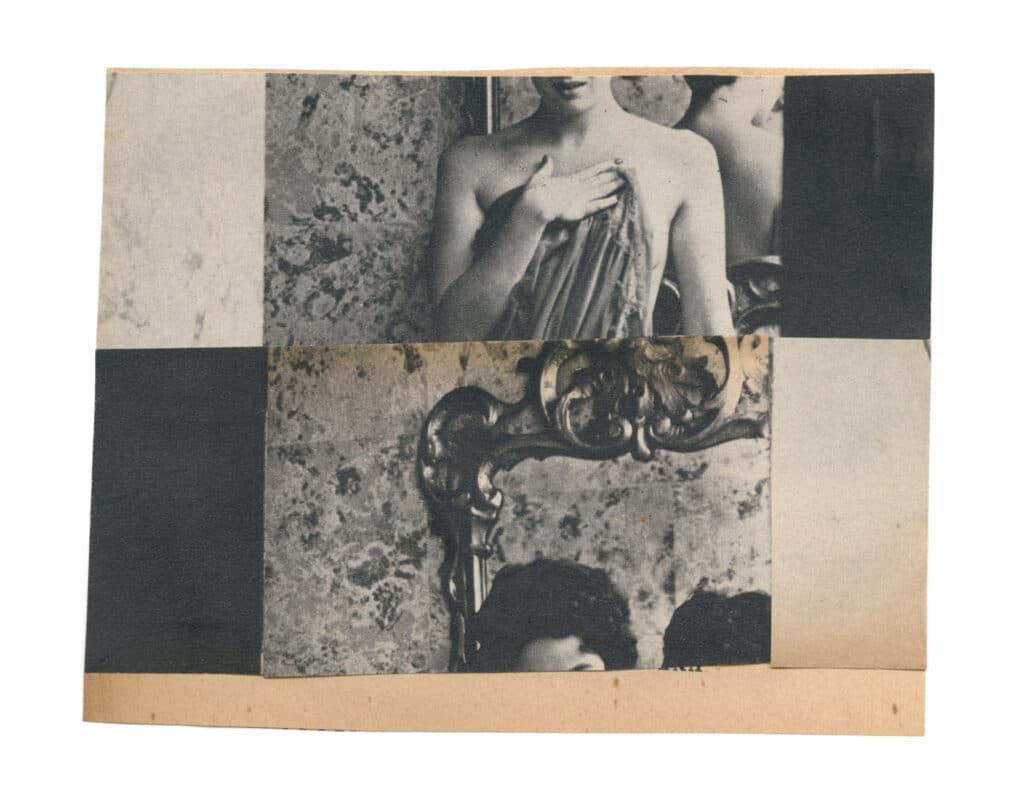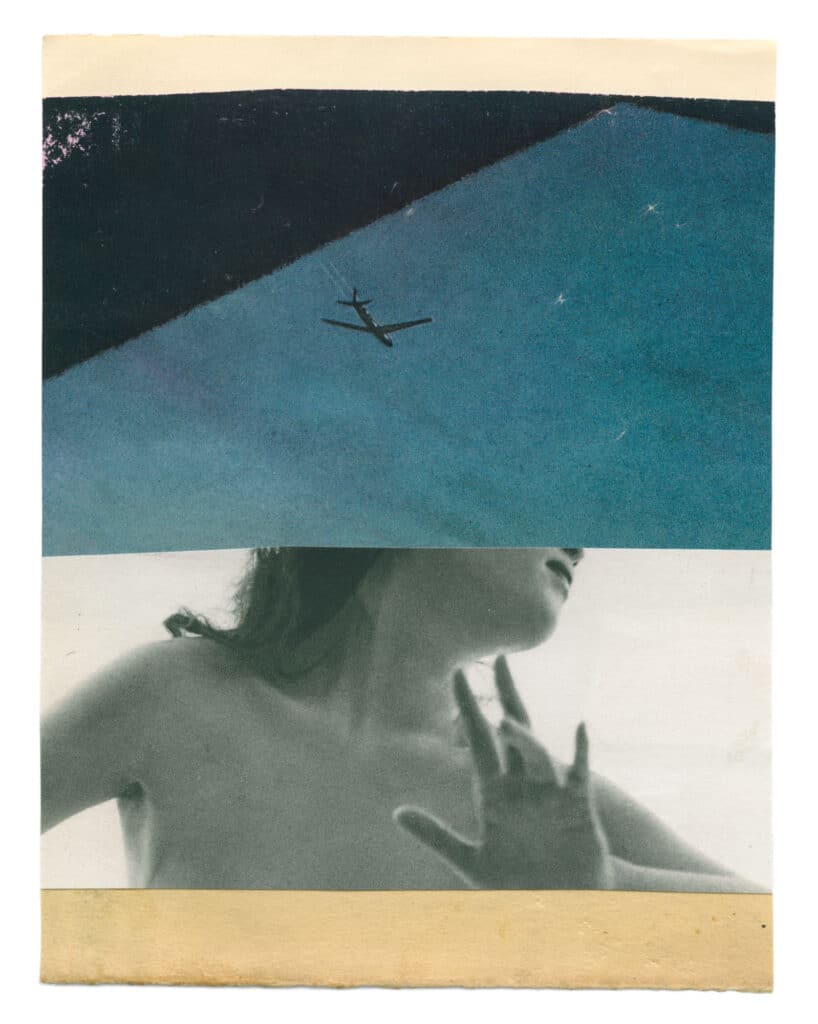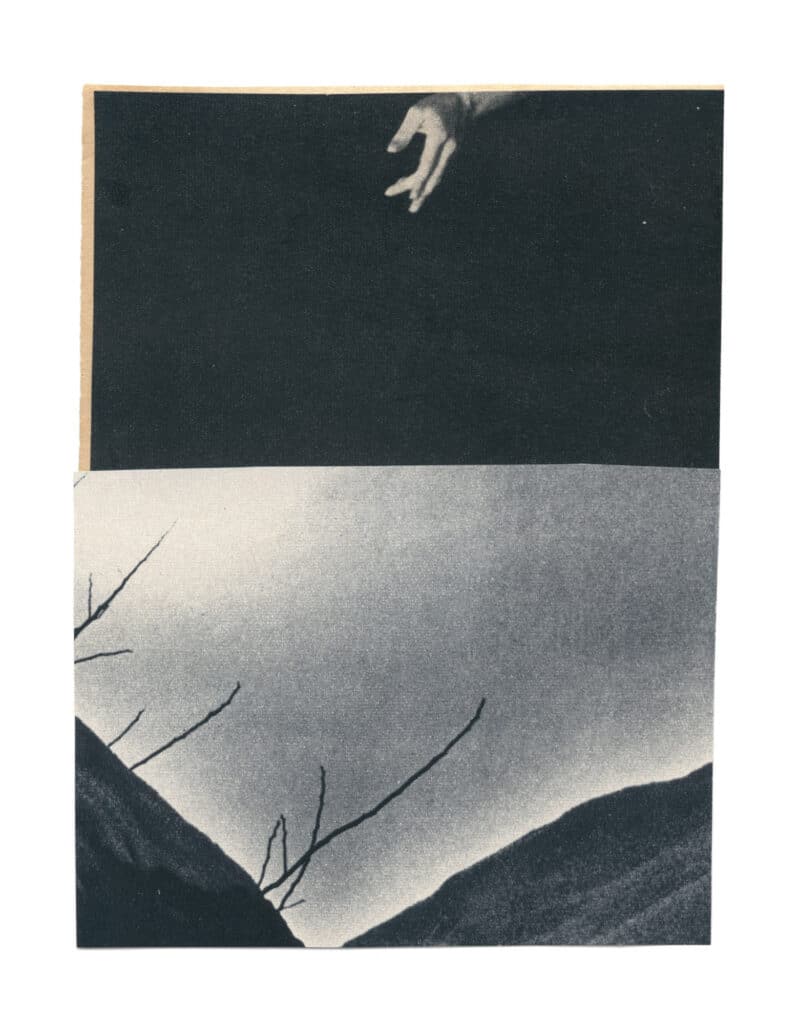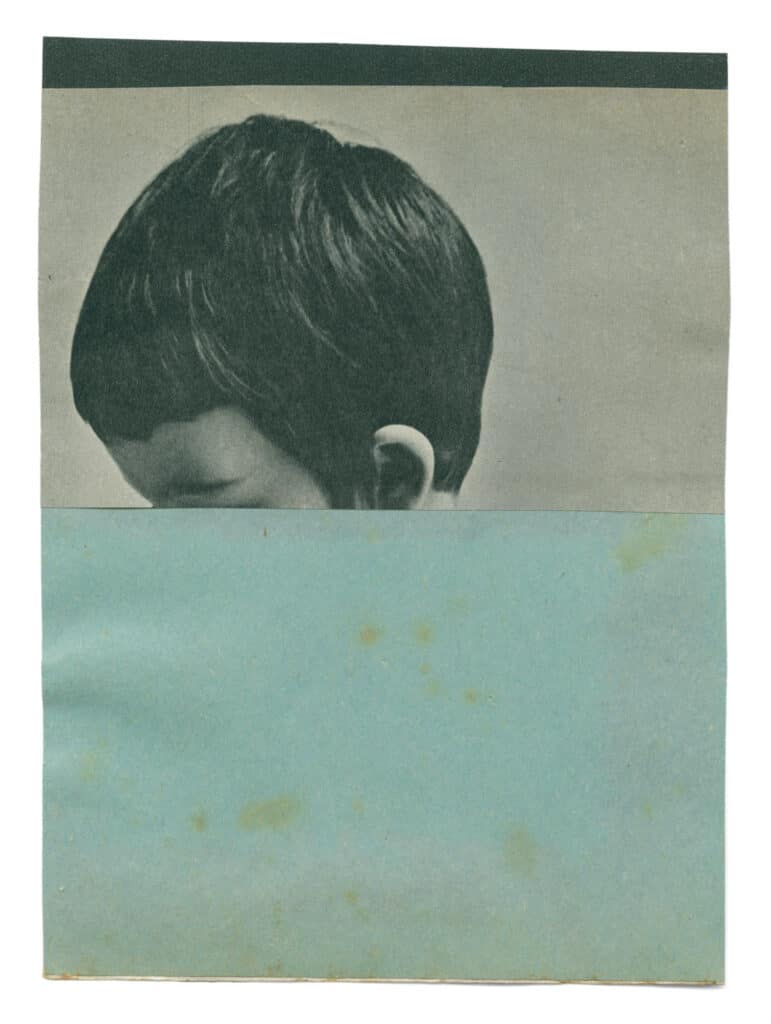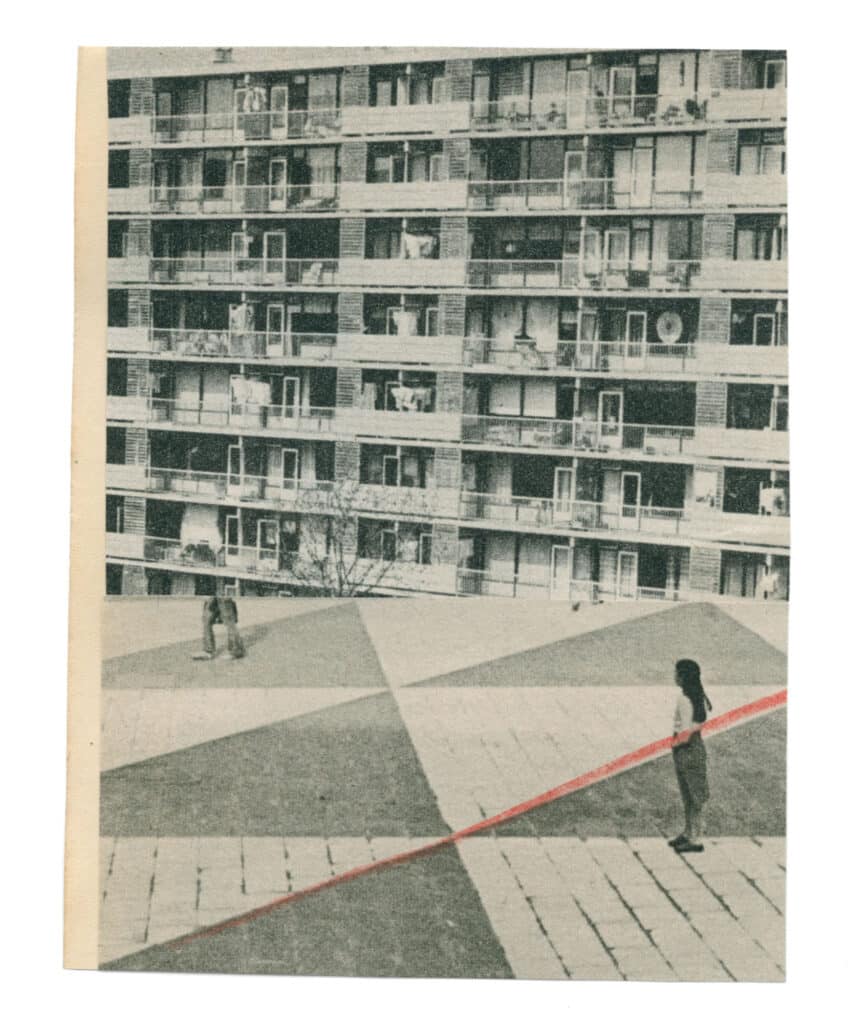Opening the door onto Katrien de Blauwer’s atelier you will see piles of magazines scattered on large tables. A desk with scissors, pencils, glue, flowers sometimes. On the walls, a constellation of photographs for inspiration. Black boxes reveal cutouts of images divided by content: beaches, trees, legs, hands.
The subtle atmosphere of her canvases is built on a slight sense of imbalance, created by two or more images that split, overlap and juxtapose, giving life to tableaux and responding to spontaneous associations. In its deceptive simplicity, her work sketches narratives that could expand in a million directions, challenging the brain’s instinct to complete images that are left unfinished.
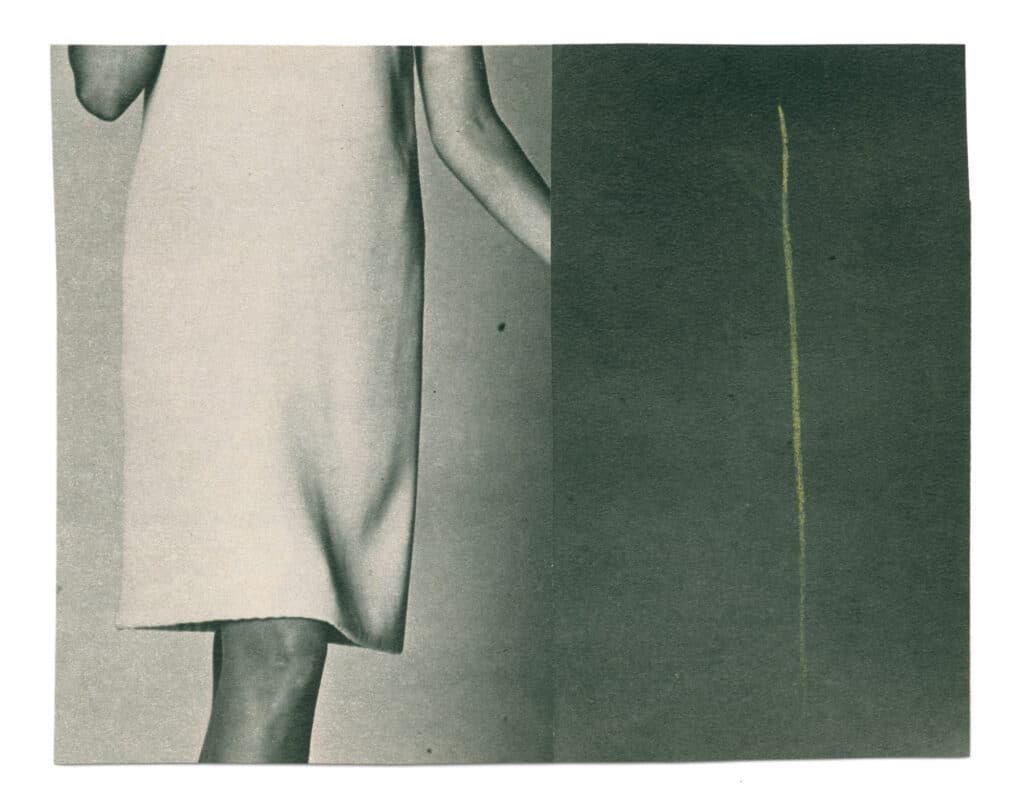
“The cut is my click”, the artist likes to say to those who attempt to understand her. She collects vintage magazines, mostly from the 60s and 70s, cuts out black and white photographs and fuses them “trying to make sure that these two images, when put together, don’t cancel each other out but catch fire”, writes film critic Philippe Azoury in the text for the book.
Katrien de Blauwer’s universe orbits in the gravitational pull of a strong female presence – young girls and women, their gestures, anguish, ankles and skirts – but sometimes it includes men, seemingly focusing on the missed chances of communication between the male and female spheres. The artwork also strikes autobiographical notes, that hint for instance at the artist’s relationship with her grandmother, who used to cut her hair short and raised her as a boy, trying to fill the void left by the loss of her first son. In the series “When I Was a Boy”, the artist uses images of children and a light blue crayon to recall the phase of her life that ended when her femininity became undeniable, and prompted her grandmother’s rejection.
The cut often bisects a face, divides a body from a head or hips from a bust, fragmenting the human body, mutilating the meaning of the original image and erasing the identity of the protagonist. “By taking away the specificity of a face, it becomes universal. It’s not my story anymore. It’s also the story of the viewer.” Cutting is always a violent act, and the artist then redoubles this aggression with strokes of color drawn across the images. But what might seem at first glance to be gut-driven gestures are in fact the result of a slow-burning instinct, the meticulous, methodical work of an introvert. The cut is surgical, the colors linked to symbolism. Katrien de Blauwer works in the manner of a tightrope walker, seeking out the millimetric edge between harmony and tension.
Images frequently split in two, evoking the flow of subsequent frames in a film strip, jump cuts, glitches in the narrative. A strong influence for the artist, the French cinema of the 1960s shaped a visual language that plays with the idea of time and the illusion of movement, as in Chris Marker’s legendary experimental film “La Jetée”.
Confined within magazine frames, women are graceful and glamorous, at times desperate, others seductive, fragile, available, as it seems appropriate for ladies photographed by men in the 1960s. Their prisoner’s allure recalls art critic John Berger’s words in his BBC documentary “Ways of Seeing”, whose second episode is dedicated to the depiction of the female body in the history of European oil painting, leading up to modernity. “Men look at women. Women watch themselves being looked at. Every glance is a judgement. (…) You paint a naked woman because you enjoy looking at her, you put a mirror in her hand and call the painting Vanity, thus morally condemning the woman whose nakedness you painted for your own pleasure”. Katrien de Blauwer uses the same aesthetic, but her cut disrupts this scheme, breathing new life into bodies that were captured for male entertainment, thereby igniting new possibilities.
Katrien de Blauwer is represented by Galerie Les Filles du Calvaire and Gallery FIFTY ONE. Her book “The Photos She Doesn’t Show to Anyone” is published by Editions Textuel and available at the price of 49 Euro.
